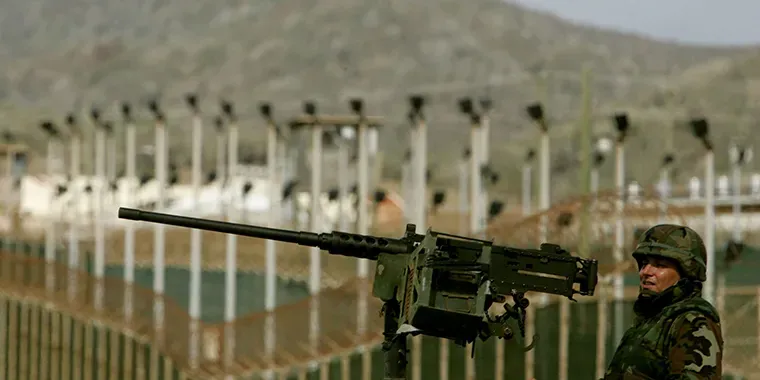
Land-Based Military Tactics in Counter-Terrorism Operations
Counter-terrorism remains one of the most squeezing worldwide security challenges of the 21st century. Whereas innovation, insights gathering, and cyber-defense play noteworthy parts, Land-based military tactics in counter-terrorism operations proceed to be the spine of neutralizing dangers on the ground. These strategies include the utilization of infantry, armored vehicles, extraordinary powers, and facilitated ground developments to disassemble fear based oppressor systems, protect prisoners, and secure key locations.
In this article, we investigate the structure, procedure, and application of ground-based military strategies in cutting edge counter-terrorism warfare.
1. The Significance of Land-Based Military Tactics
Ground powers give the physical nearness essential for securing zones where fear mongers work. Discuss strikes and ramble reconnaissance can debilitate foe foundation, but boots on the ground guarantee coordinate control over the operational environment. Land-based strategies permit strengths to:
- Conduct close-quarters combat (CQC) in urban and provincial settings.
- Engage in terrain-specific fighting where versatility is limited.
- Bridges, control plants, and communication centers are examples of fundamental foundations that should be secured and maintained.
- Implement populace security measures, guaranteeing civilians are secure amid operations.
The human element—adaptability, decision-making, and precision—remains crucial in such missions.
2. Intelligence-Led Operations
Successful counter-terrorism ground campaigns begin with exact insights. Insights units collect information through reconnaissance, sources, and partisan symbolism, directing ground troops to correct psychological militant positions.
Key insights applications in ground strategies include:
- Mapping fear based oppressor alcoves in urban fighting scenarios.
- Predicting adversary development through landscape analysis.
- Coordinating with uncommon strengths for surgical strikes.
This combination of insights and military execution is known as “Intelligence Planning of the Battlefield” (IPB), a basic step some time recently sending arriving forces.
3. Urban Fighting and Near Quarters Combat
In advanced counter-terrorism, urban fighting is an overwhelming battleground. Fear mongers frequently utilize thickly populated zones to cover up and work, making land-based strategies exceedingly complex.
Ground powers depend on:
- Room-clearing strategies for building-to-building assaults.
- Use of armored staff carriers for secure troop transport.
- Controlled devastations to neutralize braced psychological militant positions.
Close quarters combat emphasizes speed, exactness, and negligible collateral damage—all fundamental for keeping up civilian belief and safety.
4. Coordination with Extraordinary Strengths Units
Elite units like extraordinary operations strengths play a basic part in counter-terrorism ground missions. They specialize in:
- Hostage protection operations.
- Targeted end of high-value fear based oppressor leaders.
- Covert penetration of adversary positions some time recently bigger military engagement.
Special strengths frequently act as the initiator of ground operations, clearing the way for bigger infantry movements.
5. Terrain-Based Strategies
One of the qualities of land-based strategies is the capacity to adjust to diverse terrains:
- Mountainous districts require light infantry with tall mobility.
- Armoured mobility and effective supply chain management are essential for desert combat.
- Jungle landscape calls for observation watches and snare tactics.
Understanding the environment guarantees most extreme operational effectiveness and decreases troop vulnerability.
6. Civil-Military Coordination

Counter-terrorism is not simply a military assignment. Ground powers must collaborate with police, insights organizations, and nearby specialists. This includes:
- Humanitarian help amid and after operations.
- Securing clearing courses for civilians.
- Supporting recreation and soundness after fear based oppressor dangers are neutralized.
Such coordination reinforces open belief and makes it harder for fear based oppressor bunches to recapture influence.
7. Mental and Vital Impact
Land-based military nearness sends a solid mental message to fear monger bunches. Ground troops speak to an unmistakable constraint competent of destroying psychological militant systems from inside their fortresses. Besides, controlling the domain avoids the regrouping and rearming of foe forces.
8. Innovation in Land-Based Counter-Terrorism
Modern ground operations are upgraded by innovation, including:
- Night vision and warm imaging for low-light missions.
- Advanced communication frameworks for real-time coordination.
- Robotics and unmanned ground vehicles (UGVs) for observation and hazardous disposal.
These instruments diminish dangers to the work force whereas making strides strategic efficiency.
9. Case Ponders of Ground-Based Counter-Terrorism
- Operation Neptune Stick (2011): U.S. Naval force SEALs utilized land-based attack strategies to kill Osama container Loaded in Pakistan.
- Indian Army’s 2016 Surgical Strikes: Accuracy ground operations focusing on psychological militant dispatch cushions over borders.
- Philippines’ Marawi Attack (2017): Combined infantry and armored vehicle operations to recover the city from ISIS-affiliated militants.
These cases appear that whereas discussing control is imperative, it is the arrival ambush component that secures conclusive results.
10. Challenges and Limitations
Despite their viability, land-based strategies confront challenges:
- High casualty dangers in intensely protected fear monger zones.
- Urban civilian thickness complicates operations.
- Terrain impediments abating troop movements.
Counter-terrorism requires adjusting hostility with caution to secure both officers and civilians.
11. The Future of Ground-Based Counter-Terrorism
Advancements in AI-assisted war zone investigation, independent combat vehicles, and drone-ground integration will encourage change in land-based military strategies. However, the human element—decision-making beneath pressure—will continuously be essential.
Read More:- US Army Officer Have Authority Over Bundeswehr Soldiers
Conclusion
Land-based military tactics in counter-terrorism operations stay crucial for accomplishing definitive triumphs. Whereas discuss strikes, insights, and innovation contribute essentially, it is the troopers on the ground who eventually secure regions, disassemble fear monger systems, and reestablish solidness. As dangers advance, so will these tactics—adapting to guarantee security, security, and worldwide peace.
 The Defence Blog
The Defence Blog